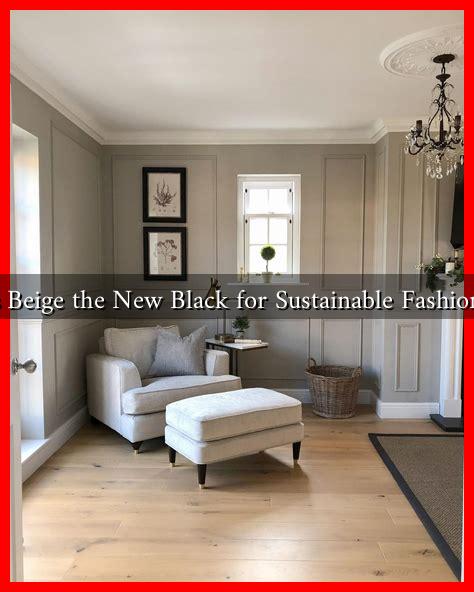-
Table of Contents
Is Beige the New Black for Sustainable Fashion?
In recent years, the fashion industry has faced increasing scrutiny over its environmental impact. As consumers become more conscious of sustainability, brands are adapting their practices to meet these demands. One intriguing trend emerging from this shift is the rise of beige as a staple color in sustainable fashion. But is beige truly the new black? This article explores the implications of this trend, its sustainability credentials, and what it means for the future of fashion.
The Shift Towards Sustainable Fashion
The fashion industry is one of the largest polluters globally, contributing to significant waste and carbon emissions. According to the Ellen MacArthur Foundation, the fashion industry is responsible for 10% of global carbon emissions and is the second-largest consumer of the world’s water supply. In response, many brands are adopting sustainable practices, focusing on eco-friendly materials, ethical labor practices, and reduced waste.
Beige: A Color with a Conscience
Beige, often seen as a neutral and versatile color, is gaining traction in sustainable fashion for several reasons:
- Timelessness: Beige is a classic color that transcends seasonal trends, encouraging consumers to invest in pieces that last longer.
- Versatility: Its neutral tone allows for easy pairing with other colors, making it a staple in any wardrobe.
- Natural Aesthetics: Beige often evokes a sense of nature and simplicity, aligning with the ethos of sustainability.
Brands like Reformation and Everlane are leading the charge by incorporating beige into their collections, showcasing how this color can be both stylish and sustainable. For instance, Reformation’s use of eco-friendly fabrics in their beige dresses highlights the potential for chic, sustainable options.
Case Studies: Brands Embracing Beige
Several brands have successfully integrated beige into their sustainable fashion lines:
- Patagonia: Known for its commitment to environmental responsibility, Patagonia offers a range of beige outerwear made from recycled materials.
- Stella McCartney: A pioneer in sustainable luxury fashion, McCartney’s collections often feature beige tones, emphasizing the use of organic cotton and innovative materials.
- Everlane: This brand focuses on transparency and ethical production, with a variety of beige basics that are both stylish and sustainable.
These brands demonstrate that beige can be a fashionable choice while adhering to sustainable practices, appealing to eco-conscious consumers.
The Environmental Impact of Color Choices
Color choices in fashion can significantly impact sustainability. The dyeing process for fabrics often involves harmful chemicals and large amounts of water. By opting for natural colors like beige, brands can reduce their environmental footprint. According to a study by the Fashion Institute of Technology, natural dyes require less water and energy compared to synthetic dyes, making beige a more sustainable option.
Consumer Behavior and Trends
As consumers become more aware of their purchasing decisions, the demand for sustainable fashion continues to grow. A survey by McKinsey & Company found that 67% of consumers consider the use of sustainable materials when making a purchase. This shift in consumer behavior is pushing brands to rethink their color palettes and production methods.
Beige, with its understated elegance, appeals to a demographic that values sustainability without sacrificing style. The trend towards minimalism in fashion also supports the rise of beige, as consumers seek to simplify their wardrobes with versatile pieces.
Conclusion: The Future of Beige in Sustainable Fashion
In conclusion, beige is emerging as a significant player in the realm of sustainable fashion. Its timeless appeal, versatility, and alignment with eco-friendly practices make it a compelling choice for both consumers and brands. As the fashion industry continues to evolve, the embrace of beige may signal a broader shift towards sustainability, encouraging consumers to make more conscious choices.
Ultimately, while beige may not completely replace black as a fashion staple, it represents a growing movement towards a more sustainable and thoughtful approach to style. As we look to the future, the question remains: will beige become the new black in the world of sustainable fashion?
For more insights on sustainable fashion trends, visit Ellen MacArthur Foundation.



